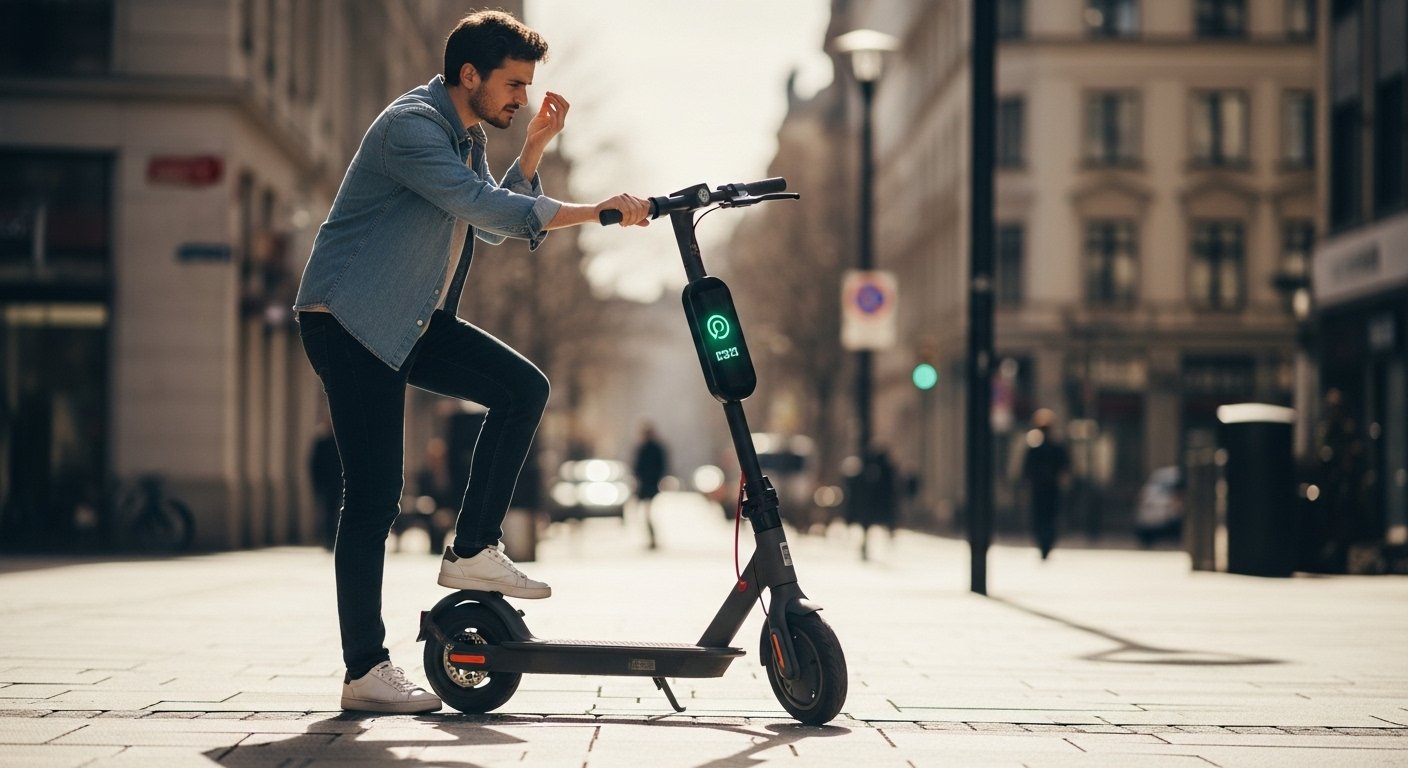Technology
Why Does My Electric Scooter Turn On But Not Moves

Electric scooters have quickly become a convenient way to commute, explore cities, and reduce dependency on cars. They are easy to ride, environmentally friendly, and relatively low-cost compared to other forms of personal transport. However, one common issue that frustrates many riders is when the scooter powers on but refuses to move. The display might light up, the throttle may respond, and yet the wheels remain still. Understanding why this happens is essential for ensuring safety, prolonging your scooter’s life, and avoiding unnecessary repair costs.
Battery and Power Supply Issues
One of the most frequent reasons an electric scooter turns on but does not move is linked to the battery and power system. The battery may have enough energy to power the display and lights but not enough to drive the motor. Lithium-ion batteries, which are commonly used, can lose their capacity over time. This means even if the scooter indicates it is on, the motor may not be receiving the energy required to push the wheels forward.
Another possibility is poor battery connections. Loose, corroded, or damaged wires can interrupt the flow of power. While the scooter may have enough connection to switch on, the weakened flow could prevent the motor from activating properly. Checking battery health and ensuring connections are clean and tight can often solve this issue. If not, replacement might be necessary.
Throttle and Control System Malfunctions
The throttle is essentially the scooter’s accelerator. When you twist or press it, it sends signals to the controller, which in turn tells the motor to run. If this communication is disrupted, the scooter will not move even though it is powered on. Worn-out throttle sensors, broken wiring, or controller malfunctions are common culprits. The controller acts as the scooter’s brain, interpreting rider inputs and managing power distribution. If the controller is damaged due to overheating, water exposure, or an internal fault, it may still power the lights and display but fail to direct energy to the motor. Resetting or replacing the controller can often resolve this type of problem.
Motor-Related Problems
The motor is the driving force of the scooter, and issues here are another major reason for the scooter not moving. Motors can fail due to excessive wear, overheating, or electrical issues. Sometimes the motor’s internal wiring burns out, or the magnets lose effectiveness. In other cases, debris such as dirt or water can block the motor from turning freely. A scooter may still switch on and look functional, but a faulty or blocked motor will not engage. For example, if the motor coils are damaged, the motor will fail to generate torque. Regular cleaning and avoiding harsh riding conditions help extend the motor’s life, but once it fails, replacement is usually the only option.
Brake and Safety Lock Mechanisms
Many modern scooters include safety features to prevent accidents. One of these is the brake or safety lock system. If the scooter detects that the brake is engaged or the lock is activated, it will not move even when powered on. This is a deliberate safety mechanism designed to stop the scooter from taking off unexpectedly. Sometimes, the brake sensors may become stuck or misaligned, causing the scooter to think the brake is still being pressed. In such cases, the scooter powers on but does not move. Checking brake levers, sensors, and safety locks can often uncover the issue. Adjustments or replacements might be required if the problem persists.
Software and Firmware Errors
Like smartphones and computers, electric scooters rely on software and firmware to operate. These programs control how the hardware interacts and ensure smooth functionality. If the firmware becomes corrupted or outdated, the scooter may fail to respond to acceleration inputs. Some scooters have error codes displayed on the screen, helping riders identify specific issues. In such cases, consulting the manual or contacting technical support can help resolve the matter. Updating the firmware or resetting the scooter’s system often clears minor bugs. This is why some riders turn to resources such as a UK Store that provides both updates and reliable support when troubleshooting software problems.
Environmental and Usage Factors
The way a scooter is used and the environment in which it operates play significant roles in its performance. Riding in heavy rain or through puddles can expose sensitive electronic components to water damage. Dusty or sandy conditions may cause dirt to enter moving parts or sensors. Extreme heat or cold can also impact battery efficiency, causing the scooter to switch on without delivering full power to the motor. In many cases, consistent exposure to harsh conditions shortens the lifespan of key components. Riders should consider protective accessories, safe storage, and careful handling to minimize the risk of environmental damage. Maintenance products from a trusted UK Store can be useful in protecting the scooter against these challenges.
Troubleshooting Steps for Riders
When a scooter turns on but refuses to move, riders can try a few basic troubleshooting steps before heading to a repair service. First, inspect the battery level and connections. Then check for loose or frayed wires around the throttle and controller. Examine the brake levers to ensure they are not stuck, and look for any visible obstructions around the motor or wheels. Resetting the scooter by turning it off completely and then powering it back on can sometimes clear temporary glitches. Riders should also look out for error codes on the display. Following these steps helps identify whether the issue is minor and fixable at home or requires professional assistance. Purchasing parts or accessories from a reliable UK Store ensures compatibility and reduces the chances of further complications.
When to Seek Professional Help
While some problems can be resolved with simple checks, others require expert intervention. If the motor is burnt out, the controller is damaged, or the wiring system is beyond repair, it is best to consult professionals. Attempting complex repairs without technical knowledge can worsen the damage and even create safety risks.
Authorized repair centers or online platforms specializing in electric scooter parts often provide reliable solutions. Professional diagnostics can identify hidden issues that are not obvious through basic inspection. Whether it’s replacing a motor, updating firmware, or addressing electrical faults, turning to specialists ensures long-term performance. Riders often find peace of mind when sourcing genuine parts and technical advice from a reputable UK Store, especially when dealing with high-value scooters.
Conclusion
An electric scooter that powers on but does not move can be frustrating, but the issue usually has an identifiable cause. Battery performance, throttle communication, motor condition, brake safety locks, and even software errors all play roles in how the scooter functions. Environmental factors and maintenance habits also influence long-term reliability. Understanding these aspects allows riders to diagnose problems more effectively and make informed decisions about repairs or replacements. In many cases, simple troubleshooting can resolve the issue. However, when the problem is more complex, seeking professional repair services is the safest option. Regular maintenance, careful use, and sourcing parts from a trusted UK Store can help keep your electric scooter running smoothly for years.
-

 Celebrity12 months ago
Celebrity12 months agoWho Is Jennifer Rauchet?: All You Need To Know About Pete Hegseth’s Wife
-

 Celebrity1 year ago
Celebrity1 year agoWho Is Klarissa Munz: The Untold Story of Freddie Highmore’s Wife
-

 Celebrity1 year ago
Celebrity1 year agoWho Is Mallory Plotnik?: The Untold Story of Phil Wickham’s Wife
-

 Celebrity11 months ago
Celebrity11 months agoWho Is Terrance Michael Murphy?: Everything about Audie Murphy’s Son
















